By Esha Chaudhuri
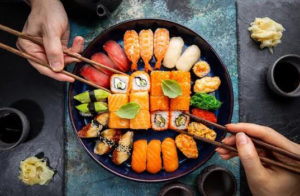 The consumption of Japanese popular culture is not a new phenomenon- from the naturally growing cherry blossoms, to drawing inspiration from Japanese anime, Naruto of the Manga comics, and now to the growing gastronomic journey in the city, the influence of the Far East is a deep rooted one. Sunday Shillong in its quest to discover places of intrigue and popularity across the city delves into the uptake of popular Japanese culinary delights interviewing some of the popular spots in Shillong.
The consumption of Japanese popular culture is not a new phenomenon- from the naturally growing cherry blossoms, to drawing inspiration from Japanese anime, Naruto of the Manga comics, and now to the growing gastronomic journey in the city, the influence of the Far East is a deep rooted one. Sunday Shillong in its quest to discover places of intrigue and popularity across the city delves into the uptake of popular Japanese culinary delights interviewing some of the popular spots in Shillong.
Influence of the East
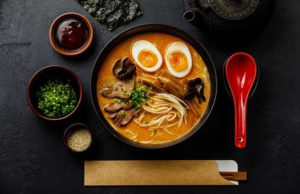 Exposure to popular television shows, travel, books and comics, and global culture through wide access on social media has been the catalytic factor for many to explore unchartered territories.
Exposure to popular television shows, travel, books and comics, and global culture through wide access on social media has been the catalytic factor for many to explore unchartered territories.
As Iuni Yoomi D Dhar, Owner and Proprietor Cafe Sola perceives it, “My journey with Japanese noodles in our menu starts with my love for anime, especially my favourite show Naruto where ramen always found mention. As a child, I’d imagine the experience of tasting a bowl of ramen and that inspired 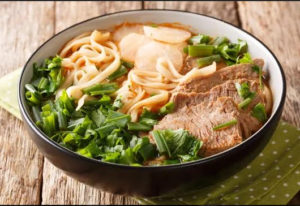 me to study about ramen and other Japanese noodles.”
me to study about ramen and other Japanese noodles.”
Echoing similar thoughts, Rida Shullai, Owner and Chef at Riosk Food Centre says, “I believe the entertainment industry like anime, Japanese movies as well as cooking shows on television and online platforms have drawn our youngsters and towards Japanese food existence in Shillong.”
Jason Lenthang, Managing Director at Souper Bowl 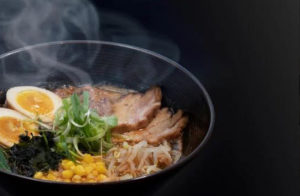 says, “My venture isn’t particularly a Japanese restaurant as we do offer Pho from Vietnam and Thukpa from Tibet; but yes, it draws some inspiration from the ramen culture and the similar food trends which we have tried to bring together under one roof.”
says, “My venture isn’t particularly a Japanese restaurant as we do offer Pho from Vietnam and Thukpa from Tibet; but yes, it draws some inspiration from the ramen culture and the similar food trends which we have tried to bring together under one roof.”
Explaining her zest for travelling as her motivation, Rida Tariang, Curator at Grove Eatery, articulates, “The concept of introducing Japanese food, like sushi 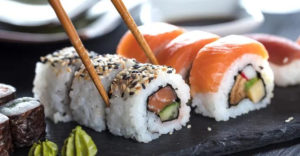 and ramen came about because of my travels. In my social circles, many like me missed savouring such dishes back home. Moreover, I truly felt that since I enjoy eating some of these foods, people here (in Shillong) were ready to try something new if they hadn’t already.”
and ramen came about because of my travels. In my social circles, many like me missed savouring such dishes back home. Moreover, I truly felt that since I enjoy eating some of these foods, people here (in Shillong) were ready to try something new if they hadn’t already.”
Changing taste buds – coming of age, contemporary tastes
 Traditionally, a trip to the acclaimed cafes and restaurants in the city meant relishing a plate of momos or the locally delectable chowchow. While maintaining a dominant leaning towards it, there is an apparent switch from these set selections to ramen, udon noodles and sushi. This uptake of new foods has been heralding changes in consumption choices. The designated persons of upcoming food joints confirm this growing popularity among people across the city.
Traditionally, a trip to the acclaimed cafes and restaurants in the city meant relishing a plate of momos or the locally delectable chowchow. While maintaining a dominant leaning towards it, there is an apparent switch from these set selections to ramen, udon noodles and sushi. This uptake of new foods has been heralding changes in consumption choices. The designated persons of upcoming food joints confirm this growing popularity among people across the city.
Shullai affirms, “Yes! Chow and momos are like our staple food here; be it on the streets or restaurants but sometimes we do like changes too and trying out new items can be 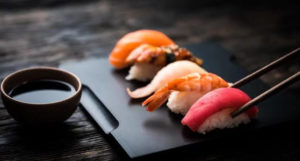 surprisingly good. Apart from ramen, sushi, tempura based seafood or vegetables is another Japanese dish which is equally trendy.”
surprisingly good. Apart from ramen, sushi, tempura based seafood or vegetables is another Japanese dish which is equally trendy.”
Further explaining her choice to introduce ramen in her café menu, she says, “Ramen has always been a go-to choice in food even when I was a child – my mother would make a local version of it and I would slurp the noodles within minutes, especially on rainy days.”
The idea of a bowl of ramen has not been alien altogether. Elaborating on this notion, Lenthang observes, “Having been in the business and studying food trends and popular 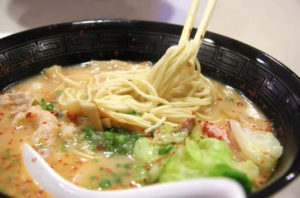 choices in town I do see a huge volume of businesses are those that cater to chow, momos or soup chows.” Taking it a notch higher, he adds, “However, I wanted to give the soup-chow a new twist by bringing in new flavours and a culinary experience similar to existing popular demands. Souper Bowl was conceived based on this very idea.”
choices in town I do see a huge volume of businesses are those that cater to chow, momos or soup chows.” Taking it a notch higher, he adds, “However, I wanted to give the soup-chow a new twist by bringing in new flavours and a culinary experience similar to existing popular demands. Souper Bowl was conceived based on this very idea.”
Comparing the graphs between age-old food options and newly introduced foods, Tariang says, “Local food will always triumph over any trending cuisine, thanks to the convenience, pricing and its taste. There is, however, a large group of customers emerging who are adventurous eaters. Thanks to social media, we are bombarded with food images from around the world leading to higher curiosity in trying new cuisines at a much faster pace.
Building on the concept of the new, Dhar explains, “Chow and momos will always be that 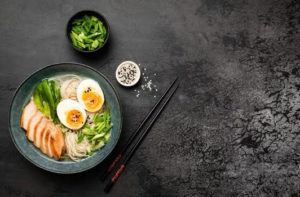 comfort food to most people in Meghalaya and the North East. The idea of introducing new eateries and choices is not to replace them but to add more options for people to choose from.”
comfort food to most people in Meghalaya and the North East. The idea of introducing new eateries and choices is not to replace them but to add more options for people to choose from.”
Expressing his thoughts on this switch, Lenthang adds, “While the Chinese, Indian, and Continental restaurants are flourishing, the local cuisines aren’t left out as there’s a huge demand for local cuisine locally, as well as tourists. What cannot be ignored is that people in Shillong are now more open to diverse food options which explains why Japanese dishes like ramen and sushi are picking up so well and will only grow bigger with time.”
Food is always en vogue
While challenges loom large with a new venture augmented by the rise in cafes, restaurants, home delivery services, and especially more so for a food genre different from the archetype of the local palates. However, the relieving factor being that no matter the challenges, food is basic, and good food is always desirable. In fact, the local restaurateurs express their thoughts on the current food trends and developments.
Tariang says, “It’s an exciting time for any restaurateur right now despite the challenges of COVID-19, transportation and rise in prices of most commodities. But to push the boundaries one has to feel secure, and right now the challenges we face are intimidating and therefore it’s not as easy to take risks.”
Rooting for movement in the times, Dhar says, “In times of fast information, people have become more excited about the new cultures, fashion and foods and it is our duty as a cafe or restaurant owner to create such experiences for them while respecting and honouring our own culture.”
Based on her observations, Shullai states, “The people of Meghalaya have always been foodies. They travel the world to experience different kinds of cuisines and Shillong has always been the hub for people from all over to experience its unique and quality food. Therefore, in terms of the scale of the food industry, the growth is looking positive.”
Interpreting the growth in the industry, Lenthang articulates, “Food business is only going to grow and we will certainly be seeing more speciality options as like I said, the consumers are ready!”
Whether it’s sake, soba or sushi, for a food connoisseur, these words ring a bell of all things scrumptious, appetising and appealing.



